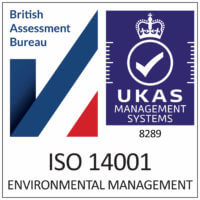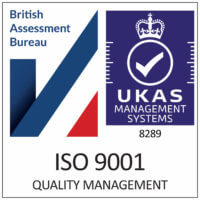Exploring the Benefits of Peat-Free All-Purpose Compost for Erosion Control
Oct 17th 2023
If you’re looking for a sustainable and effective solution to combat erosion, peat-free all-purpose compost might just be the answer you’ve been searching for. In this article, we’ll dive into the fascinating world of peat-free compost and explore the numerous benefits it offers for erosion control. From its environmentally friendly composition to its ability to improve soil structure, we’ll uncover how this natural alternative can protect your landscape and promote healthy growth. So, get ready to discover the power of peat-free all-purpose compost in effectively controlling erosion and nurturing your land.
What is Peat-Free All-Purpose Compost?
Definition and Composition
Peat-free all-purpose compost is a type of gardening material that does not contain peat, which is commonly found in traditional composts. Peat-free compost is typically composed of a mixture of organic materials. These materials are carefully blended to create a nutrient-rich and well-structured compost that promotes healthy plant growth.
Benefits of Peat-Free Compost
Peat-free compost offers numerous benefits for both gardeners and the environment. Firstly, it helps reduce the demand for peat extraction, which can have a detrimental impact on peatlands and their ecosystems. By opting for peat-free compost, you can contribute to the preservation of these important natural habitats.
Peat-free compost also promotes sustainable gardening practices. As the compost is made from recycled organic materials, it helps reduce waste and landfill usage. Additionally, it is a renewable resource, as the organic matter can be replenished and reused over time.
Furthermore, peat-free compost is known to enhance soil fertility and structure. It improves moisture retention, allowing plants to access water more effectively, and promotes aeration, which ensures healthier root development. With the right blend of nutrients, peat-free compost provides optimal conditions for plants to thrive.
Understanding Erosion Control
Definition and Causes of Erosion
Erosion refers to the process of soil displacement, caused by the movement of water, wind, or other natural forces. It can occur gradually over time or as a result of sudden events like heavy rainfall or strong winds. Erosion can have detrimental effects on agricultural lands, gardens, and natural landscapes.
There are several factors that contribute to erosion. One of the main causes is the removal of vegetation, which stabilizes the soil and prevents erosion. When plants are removed, the soil becomes vulnerable to erosion from water or wind. Additionally, steep slopes, improper drainage, and inadequate soil management practices can also increase the risk of erosion.
Methods of Erosion Control
There are various methods of erosion control that can be employed to prevent or minimize soil erosion. These methods include:
- Planting Vegetation: Planting a diverse range of native and adaptive plants helps establish a root system that anchors the soil, preventing erosion. The roots also help absorb water and enhance soil structure.
- Contouring: Creating contours or terraces along slopes helps slow down the flow of water and allows it to infiltrate into the soil, rather than creating run-off that can cause erosion.
- Mulching: Applying a layer of organic mulch, such as wood chips or straw, helps protect the soil from direct rainfall impact and erosion caused by wind.
- Retaining Walls: Constructing retaining walls or erosion control structures can be effective in stabilizing slopes and preventing soil erosion.
- Soil Stabilization: Techniques such as geotextiles, erosion control blankets, and bioengineering methods can be used to provide temporary or permanent stabilization to soil surfaces.
By combining these erosion control methods with the use of peat-free all-purpose compost, gardeners can effectively prevent erosion and maintain healthy soil conditions.
The Role of Compost in Erosion Control
Moisture Retention and Soil Stability
One of the key roles of compost in erosion control is its ability to retain moisture in the soil. The organic materials in peat-free all-purpose compost have a high water-holding capacity, ensuring that plants have access to adequate moisture even during dry periods. This is particularly important for preventing erosion, as dry and compacted soil is more prone to erosion by wind and water.
Compost also improves soil stability by enhancing its structure. It helps bind soil particles together, creating aggregated soil that is more resistant to erosion. The improved soil structure allows for better water infiltration and reduces surface runoff, minimizing the risk of erosion caused by heavy rainfall.
Nutrient Enhancement and Plant Growth
Peat-free all-purpose compost contains a range of essential nutrients that are beneficial for plant growth. When applied to the soil, compost slowly releases these nutrients, providing a consistent and balanced source of nutrition for plants. This promotes healthy root development and overall plant growth, which in turn helps prevent erosion.
By ensuring strong and vigorous plant growth, compost helps establish a dense root system that acts as a natural barrier against erosion. The roots bind the soil together, making it less susceptible to displacement from wind or water.
Organic Matter Accumulation and Soil Structure
Compost is rich in organic matter, which plays a crucial role in maintaining soil health and preventing erosion. When compost is regularly added to the soil, it gradually increases the organic matter content, improving soil structure and stability. The organic matter helps create pore spaces in the soil, allowing for better water infiltration and reducing surface runoff.
Furthermore, the decomposition of organic matter in compost introduces beneficial microorganisms to the soil. These microorganisms contribute to the breakdown of organic materials, releasing nutrients and enhancing soil fertility. The presence of these microorganisms also helps promote the formation of stable soil aggregates, which further reduces the risk of erosion.
Benefits of Peat-Free All-Purpose Compost for Erosion Control
Environmental Impact
One of the major benefits of using peat-free all-purpose compost for erosion control is its positive environmental impact. By choosing compost that does not contain peat, you are helping to protect valuable peatlands. Peatlands play a crucial role in carbon storage and provide habitat for diverse ecosystems, including rare and endangered species. The extraction of peat for gardening purposes causes significant damage to these sensitive environments. By opting for peat-free compost, you are making a sustainable choice and contributing to the conservation of peatlands.
Sustainable Agriculture
Peat-free all-purpose compost aligns with sustainable agriculture practices. Its composition, which includes recycled organic materials, helps reduce waste and minimize the need for landfill usage. By utilizing compost as a natural soil amendment, gardeners can improve soil fertility, structure, and moisture retention, contributing to sustainable and environmentally-friendly agriculture.
Compatibility with Native Plants
Peat-free all-purpose compost is compatible with a wide range of plant species, including native plants. Native plants are adapted to local climates and soil conditions, making them an ideal choice for erosion control. By using peat-free compost, you can create a suitable environment for native plants to thrive and contribute to the overall ecological balance of your garden or landscape. This promotes biodiversity and supports native pollinators and wildlife.
Long-Term Erosion Prevention
By using peat-free all-purpose compost, you are implementing a proactive approach to erosion prevention. The benefits of compost, such as improved soil structure, moisture retention, and nutrient enhancement, contribute to long-term stability and resilience of the soil. This reduces the risk of erosion and the associated costs and damages.
Case Studies
Successful Implementation of Peat-Free All-Purpose Compost for Erosion Control
Several case studies have demonstrated the effectiveness of peat-free all-purpose compost for erosion control. For example, in a study conducted by a local government agency, peat-free compost was used in a restoration project along a riverbank. By incorporating compost into the soil, the riverbank vegetation was able to establish quickly, preventing further erosion and improving habitat conditions for aquatic species.
In another case, a community garden implemented the use of peat-free compost to stabilize slopes and control erosion. With careful planning and the right application techniques, the garden successfully reduced erosion and maintained a healthy growing environment for vegetables and flowers.
These case studies highlight the practical applications and positive outcomes of using peat-free all-purpose compost for erosion control. They serve as inspiration and proof of the beneficial effects of compost in maintaining soil stability and preventing erosion.
Tips for Using Peat-Free All-Purpose Compost for Erosion Control
Site Evaluation and Preparation
Before applying peat-free all-purpose compost for erosion control, it is important to conduct a thorough site evaluation. Assess the slope, soil conditions, and vegetation cover to determine the severity of erosion and the appropriate erosion control methods to implement.
Prepare the site by removing any existing vegetation, rocks, or debris that might hinder the proper application of compost. Clearing the area also helps create a blank canvas for erosion control measures to be implemented effectively.
Application Techniques
When applying peat-free all-purpose compost for erosion control, it is essential to ensure even coverage and proper depth. Apply a layer of compost that is at least 2 to 3 inches thick, covering the entire area susceptible to erosion. Use a rake or a garden fork to carefully incorporate the compost into the soil, ensuring it reaches the root zone of existing vegetation or the seedbed for new plantings.
For slopes, it is recommended to use erosion control blankets or jute netting to hold the compost in place until plants become established. These materials help prevent the compost from washing away during heavy rainfall, allowing plants to take root and stabilize the soil.
Maintenance and Monitoring
Regular maintenance and monitoring are crucial to ensure the effectiveness of peat-free all-purpose compost for erosion control. Monitor the health and growth of the vegetation, checking for any signs of erosion or soil displacement. If necessary, add additional compost to areas that show signs of erosion or low plant vigor.
Additionally, a watering schedule should be established to ensure that the compost remains adequately moist. Watering should be done deeply and infrequently to encourage deeper root growth and prevent surface runoff, which can lead to erosion.
Conclusion
Peat-free all-purpose compost offers a sustainable and environmentally-friendly solution for erosion control. By utilizing compost in erosion-prone areas, gardeners and landowners can effectively prevent soil displacement, promote healthy plant growth, and protect valuable ecosystems. The benefits of peat-free compost, such as its environmental impact, compatibility with native plants, cost-effectiveness, and long-term erosion prevention, make it an attractive choice for those seeking a proactive approach to erosion control. With careful site evaluation, proper application techniques, and regular maintenance, peat-free all-purpose compost can be successfully used to create stable and resilient soils that are resistant to erosion.






